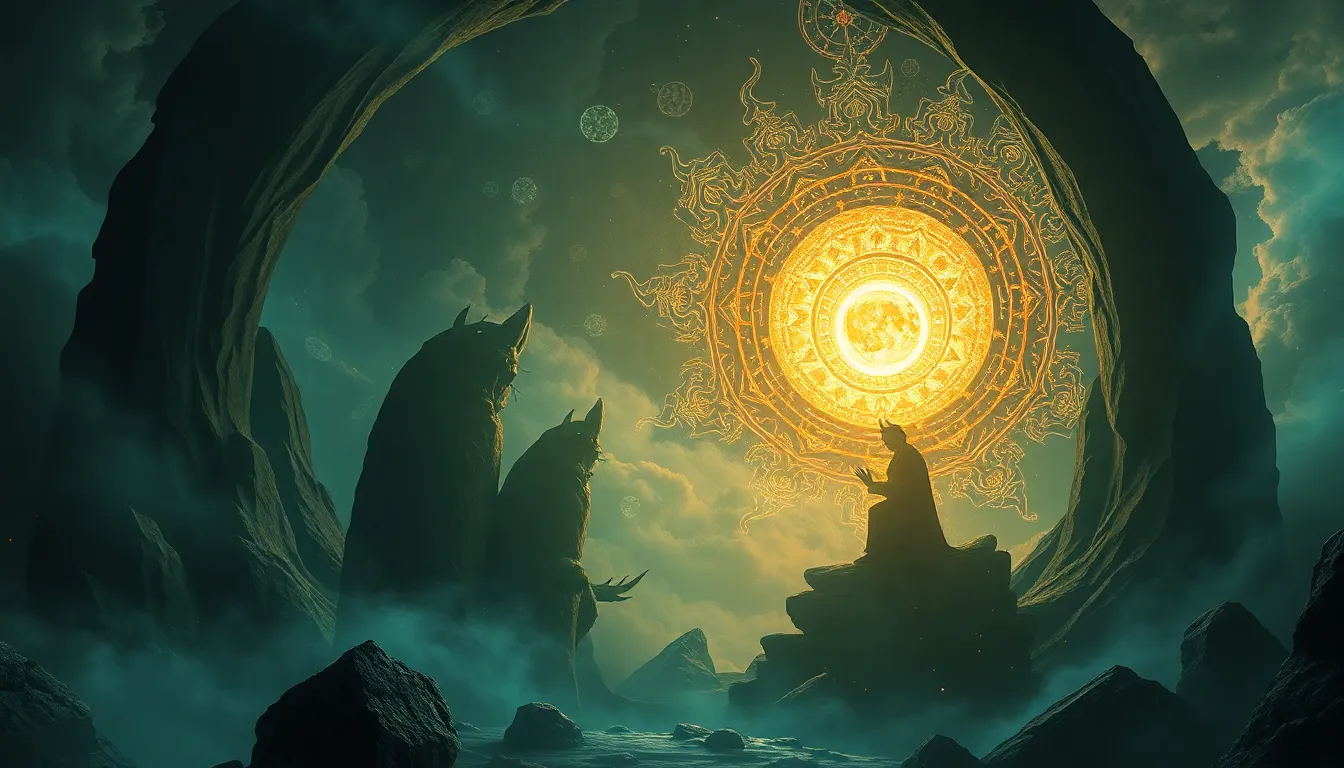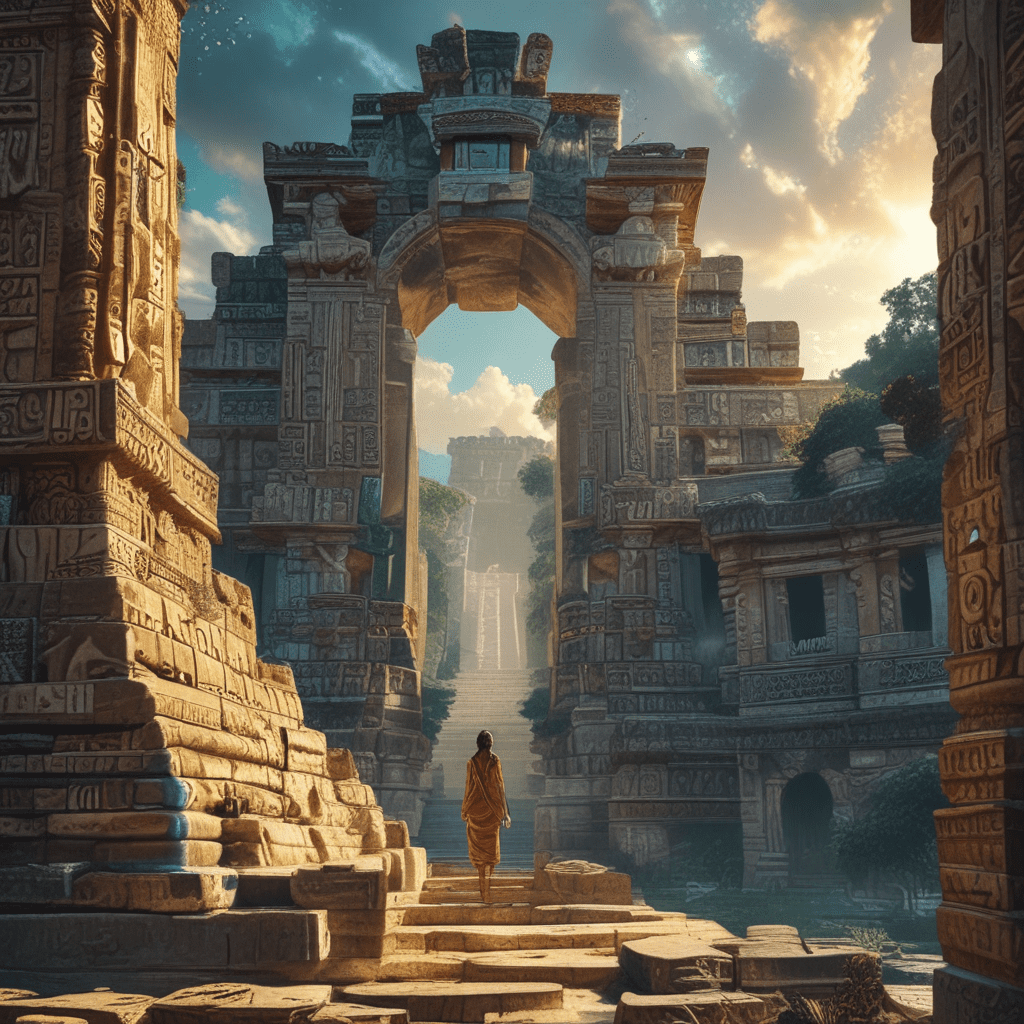The Mythical Architects: How Gods Shaped Our World
Introduction: The Intersection of Myth and Reality
Mythology holds a significant place in human culture, serving as a bridge between the tangible world and the ethereal realm of the divine. It informs our understanding of existence, morality, and the cosmos. The concept of gods as architects of the world embodies the belief that the universe and all its wonders are products of divine craftsmanship. This article explores the intricacies of this belief, revealing how gods have shaped our understanding of creation and civilization.
The Role of Creation Myths Across Cultures
Creation myths serve as foundational narratives in every culture, explaining how the universe came into being. Across various civilizations, these stories offer insights into how different societies perceive their origins. Some notable creation myths include:
- Genesis (Judeo-Christian Tradition): The story of God creating the world in six days, culminating in the creation of humanity.
- The Enuma Elish (Babylonian Mythology): The tale of Marduk defeating chaos and creating the world from the remnants of Tiamat.
- Popol Vuh (Mayan Mythology): The account of the creation of humanity by the gods, who experimented with different materials.
Despite their differences, these myths often share common themes such as chaos versus order, the significance of sacrifice, and the establishment of a cosmic order. Each myth reflects the values and beliefs of the culture from which it originates, illustrating the diverse ways in which humans have sought to understand their existence.
The Pantheon of Gods: Architects of Nature and Civilization
Many gods are revered as architects of the world, each embodying specific attributes that shape different aspects of nature and civilization. Here are a few key deities known for their creative powers:
- Vishnu (Hinduism): The preserver and protector, often depicted as maintaining the cosmic order through various avatars.
- Ptaḥ (Egyptian Mythology): The creator god associated with craftsmen and architects, believed to have fashioned the world through thought and word.
- Odin (Norse Mythology): The Allfather who, along with his brothers, created the world from the body of the first being, Ymir.
These deities illustrate the multifaceted roles gods play in shaping both the natural world and human civilization, influencing everything from agriculture to governance.
Mythical Structures: Temples, Pyramids, and Sacred Spaces
Architecture often reflects divine inspiration, with many significant structures attributed to the influence of gods. Examples of such architectural feats include:
- The Parthenon (Greece): A temple dedicated to Athena, symbolizing wisdom and warfare, showcasing the artistic and architectural prowess of ancient Greece.
- Stonehenge (England): A prehistoric monument believed to have astronomical and religious significance, possibly linked to ancient deities.
- The Great Pyramid of Giza (Egypt): A monumental tomb for Pharaoh Khufu, reflecting the Egyptians’ beliefs in the afterlife and divine kingship.
These structures not only served practical purposes but also acted as manifestations of the divine, connecting humanity with the gods they revered.
Divine Intervention: Myths of Destruction and Renewal
Many myths center around themes of destruction and renewal, where gods play a pivotal role in shaping the fate of the world. Notable examples include:
- The Great Flood (Various Cultures): Stories of a massive flood sent by gods to cleanse the world, leading to a fresh start for humanity, as seen in the tales of Noah and Utnapishtim.
- Ragnarok (Norse Mythology): The prophesied destruction of the world, followed by its rebirth, symbolizing the cyclical nature of existence.
These narratives emphasize the duality of destruction as a precursor to renewal, showcasing the gods’ authority over life and death.
The Influence of Mythology on Cultural Identity and Values
The narratives of gods as world-shapers reflect the cultural values and societal structures of various civilizations. Myths often serve as a basis for:
- Ethics: Moral lessons derived from the actions of deities, influencing societal norms.
- Governance: The divine right of kings, where rulers claim authority based on their connection to the gods.
- Social Norms: Rituals and practices that stem from mythological tales, shaping community life.
Through these narratives, cultures articulate their identities and values, forging a sense of belonging among their members.
The Legacy of Mythical Architecture in Modern Society
The architectural principles influenced by mythology continue to resonate in contemporary design. Modern structures often echo mythical themes and divine attributes, such as:
- The Sydney Opera House: Its sail-like design evokes the spirit of exploration and creativity.
- The Louvre Pyramid (France): A modern interpretation of ancient architectural forms, connecting the past with the present.
These examples reveal how ancient narratives and architectural styles have left an indelible mark on modern society, inspiring awe and reflection.
Psychology of Creation: Why We Need Mythical Architects
Attributing creation to gods fulfills a deep psychological need for understanding and meaning. Humans have an inherent desire to narrate their experiences and make sense of their environment. Myths provide:
- A Framework: They offer a structured way to understand complex phenomena.
- Connection: A sense of belonging to a larger narrative that transcends individual existence.
- Meaning: Insights into moral and ethical dilemmas faced by humanity.
This psychological significance underscores the importance of mythical architects in shaping our worldview.
Critiques and Modern Interpretations of Mythological Architecture
While mythology serves as a rich source of cultural heritage, it is also subject to critique. Scholars often debate the historical accuracy of myths and their interpretations. Modern adaptations of these myths can lead to:
- Revisionist Narratives: New interpretations that challenge traditional views.
- Cross-Cultural Dialogues: Blending elements from different mythologies in art and literature.
These evolving interpretations highlight the dynamic nature of mythology and its relevance in contemporary discourse.
Conclusion: The Enduring Influence of Mythical Architects
The narratives surrounding mythical architects continue to influence our understanding of the world. They remind us of the power of storytelling in shaping cultural identities and values. As we navigate the complexities of modern life, the blend of myth and reality offers profound insights into our existence. Embracing this interplay enriches our appreciation of the world, encouraging us to explore the ancient wisdom that still resonates today.



